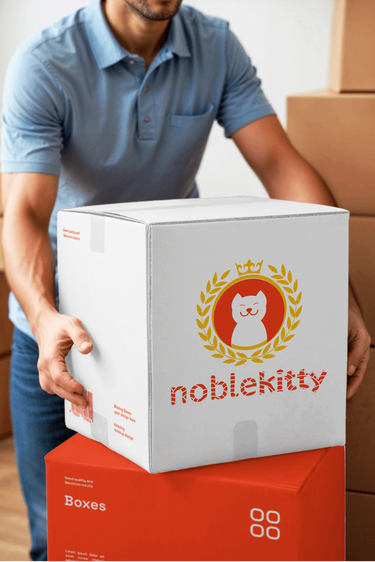Comprehensive Guide for First-Time Cat Owners
Introduction
Adopting a cat is a rewarding experience that brings joy and companionship. However, it also comes with responsibilities that require informed decisions and proactive care. This guide provides evidence-based insights into essential aspects of cat ownership, supported by research findings and visual aids to enhance understanding.
1. Understanding Your Cat's Basic Needs
1.1 Nutrition: The Foundation of Health
Proper nutrition is crucial for a cat's well-being. According to a study by the American Association of Feline Practitioners (AAFP), a balanced diet supports optimal health and longevity in cats.

- Protein: Cats are obligate carnivores; their diet should be rich in animal-based proteins.
- Taurine: An essential amino acid for heart and eye health.
- Omega-3 and Omega-6 Fatty Acids: Support skin, coat, and cognitive function.
- Water: Adequate hydration is vital; consider providing wet food and fresh water sources.
Visual Aid: Cat Nutrition Breakdown
1.2 Hydration: Preventing Urinary Issues
Dehydration can lead to urinary tract problems. A study published in the Journal of Feline Medicine and Surgery highlights the importance of encouraging water intake to prevent such issues.

- Wet Food: Incorporating wet food into your cat's diet increases moisture intake.
- Water Fountains: Cats are more likely to drink from running water sources.
Visual Aid: Impact of Wet Food on Hydration
1.3 Environmental Enrichment: Mental and Physical Stimulation
Cats require stimulation to prevent behavioral issues. Research from the American Humane Association suggests that environmental enrichment enhances a cat's quality of life.

- Scratching Posts: Prevents furniture damage and supports claw health.
- Interactive Toys: Engages cats in play, reducing boredom.
- Vertical Spaces: Cat trees and shelves provide climbing opportunities.
Visual Aid: Benefits of Environmental Enrichment
🏥 2. Health Maintenance and Preventive Care
2.1 Regular Veterinary Visits
Routine check-ups are essential for early detection of health issues. The American Veterinary Medical Association recommends annual health assessments for adult cats.
- Vaccinations: Core vaccines include rabies and feline distemper.
- Parasite Control: Regular treatments for fleas, ticks, and worms.
Visual Aid: Cat Health Check Timeline
2.2 Dental Care
Oral health is often overlooked but vital. The Veterinary Oral Health Council reports that dental disease affects a significant percentage of cats.
- Brushing: Regular brushing with cat-safe toothpaste.
- Dental Treats: Specially formulated treats to reduce plaque.
Visual Aid: Importance of Dental Care
2.3 Grooming
Regular grooming maintains coat health and reduces shedding. A study by the International Society of Feline Medicine emphasizes the benefits of grooming.
- Brushing: Frequency depends on coat length; daily for long-haired cats.
- Nail Trimming: Prevents overgrowth and injury.
Visual Aid: Grooming Schedule
3. Behavior and Socialization
3.1 Understanding Feline Behavior
Recognizing and interpreting feline behavior is crucial. The American Association of Feline Practitioners provides guidelines on feline behavior.
- Body Language: Tail position, ear orientation, and vocalizations convey emotions.
- Play Behavior: Mimics hunting; provides physical and mental exercise.
Visual Aid: Decoding Cat Body Language
3.2 Socialization
Early socialization leads to well-adjusted cats. Research indicates that kittens exposed to various stimuli between 2 to 7 weeks of age are more adaptable.
- Positive Experiences: Introduce new people, pets, and environments gradually.
- Safe Spaces: Ensure cats have areas to retreat when feeling overwhelmed.
Visual Aid: Socialization Tips
4. Hygiene and Household Safety
4.1 Litter Box Maintenance
A clean litter box is essential for a cat's comfort and hygiene. The American Association of Feline Practitioners recommends:
- Number of Boxes: One per cat plus one extra.
- Cleaning Frequency: Scoop daily; change litter weekly.
Visual Aid: Litter Box Hygiene Tips
4.2 Household Hazards
Cats are curious and may encounter household hazards. The American Society for the Prevention of Cruelty to Animals (ASPCA) provides a list of common household toxins.
- Toxic Plants: Lilies, poinsettias, and azaleas are harmful.
- Human Foods: Chocolate, onions, and alcohol are toxic to cats.
Visual Aid: Household Hazards for Cats
5. Enrichment and Play
5.1 Importance of Play
Play is vital for a cat's physical and mental health. The American Humane Association states that play reduces stress and prevents behavioral problems.
- Interactive Play: Use toys that mimic prey behavior.
- Solo Play: Provide puzzle feeders and treat-dispensing toys.
Visual Aid: Types of Cat Toys
5.2 Creating an Enriching Environment
An enriched environment promotes well-being. The American Association of Feline Practitioners suggests:
- Vertical Spaces: Cat trees and shelves for climbing.
- Window Views: Perches near windows for bird-watching.
Visual Aid: Designing an Enriched Environment
6. Research and Resources
- American Association of Feline Practitioners (AAFP): aafp.org
- Journal of Feline Medicine and Surgery: jfm.sagepub.com
- American Humane Association: americanhumane.org
- American Veterinary Medical Association (AVMA): avma.org
- Veterinary Oral Health Council: vohc.org
- International Society of Feline Medicine: icatcare.org
- American Society for the Prevention of Cruelty to Animals (ASPCA): aspca.org
Conclusion
Becoming a responsible cat owner involves understanding and meeting your cat's physical, emotional, and social needs. By following the evidence-based guidelines provided in this guide and utilizing the visual aids, you can ensure a happy and healthy life for your feline companion.
For further information and resources, consider visiting the websites of reputable organizations such as the American Association of Feline Practitioners and the American Veterinary Medical Association.













